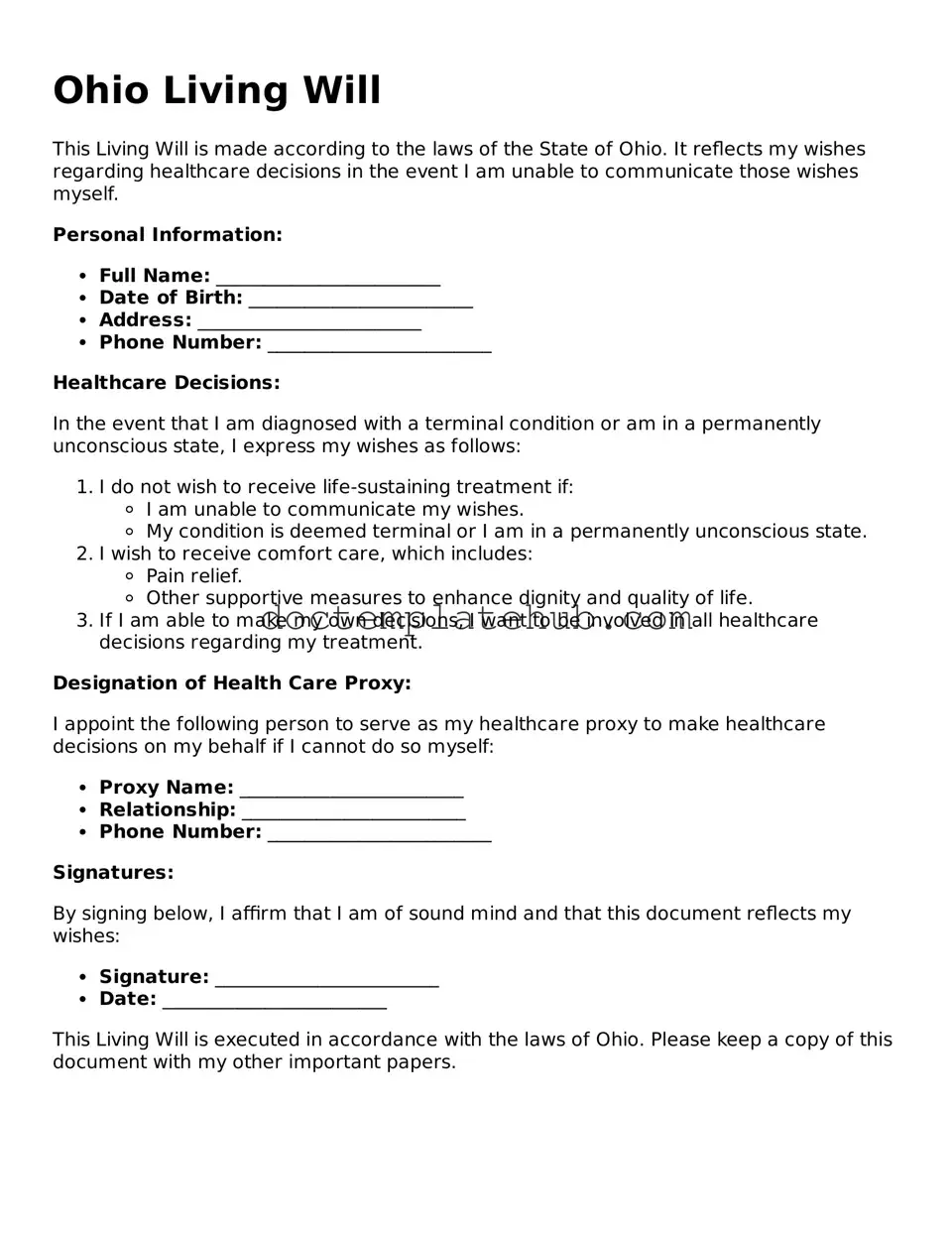What is a Living Will in Ohio?
A Living Will is a legal document that allows individuals to outline their preferences regarding medical treatment in the event they become unable to communicate their wishes. In Ohio, this document specifically addresses end-of-life care and can guide healthcare providers and family members in making decisions that align with the individual's values and desires. It is important to note that a Living Will only takes effect when a person is terminally ill or in a persistent vegetative state.
How do I create a Living Will in Ohio?
Creating a Living Will in Ohio involves several steps. First, you should carefully consider your healthcare preferences and discuss them with your loved ones. Next, you can obtain the Ohio Living Will form, which is available online or through legal resources. After filling out the form with your specific wishes, it must be signed in the presence of two witnesses or a notary public. This ensures that your document is legally valid and can be honored by healthcare providers.
Who can witness my Living Will?
In Ohio, the witnesses to your Living Will must be at least 18 years old and cannot be related to you by blood, marriage, or adoption. Additionally, they should not be entitled to any part of your estate. This requirement helps ensure that the witnesses are impartial and that your wishes are respected without any conflicts of interest.
Can I change or revoke my Living Will?
Yes, you can change or revoke your Living Will at any time, as long as you are mentally competent. If you decide to make changes, it is essential to create a new Living Will and clearly indicate that it supersedes any previous versions. To revoke your Living Will, you can simply destroy the document or inform your healthcare provider and family members of your decision. Communication is key to ensuring that your current wishes are understood and respected.
What happens if I do not have a Living Will?
If you do not have a Living Will in place and become unable to communicate your medical preferences, healthcare providers will follow standard procedures and may rely on family members to make decisions on your behalf. This can sometimes lead to disagreements among family members or decisions that do not reflect your true wishes. Having a Living Will helps avoid such situations by providing clear guidance on your preferences.
Is a Living Will the same as a Power of Attorney?
No, a Living Will and a Power of Attorney serve different purposes. A Living Will specifically addresses your medical treatment preferences at the end of life, while a Power of Attorney allows you to appoint someone to make healthcare and financial decisions on your behalf if you become incapacitated. You can have both documents in place to ensure that your healthcare wishes are honored and that someone you trust can manage your affairs if necessary.
